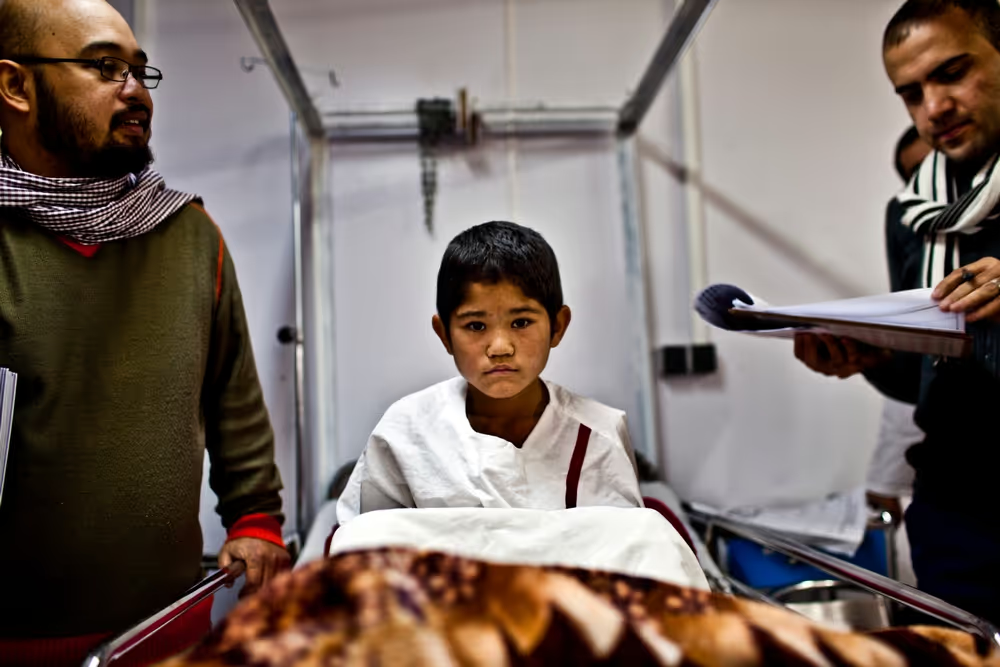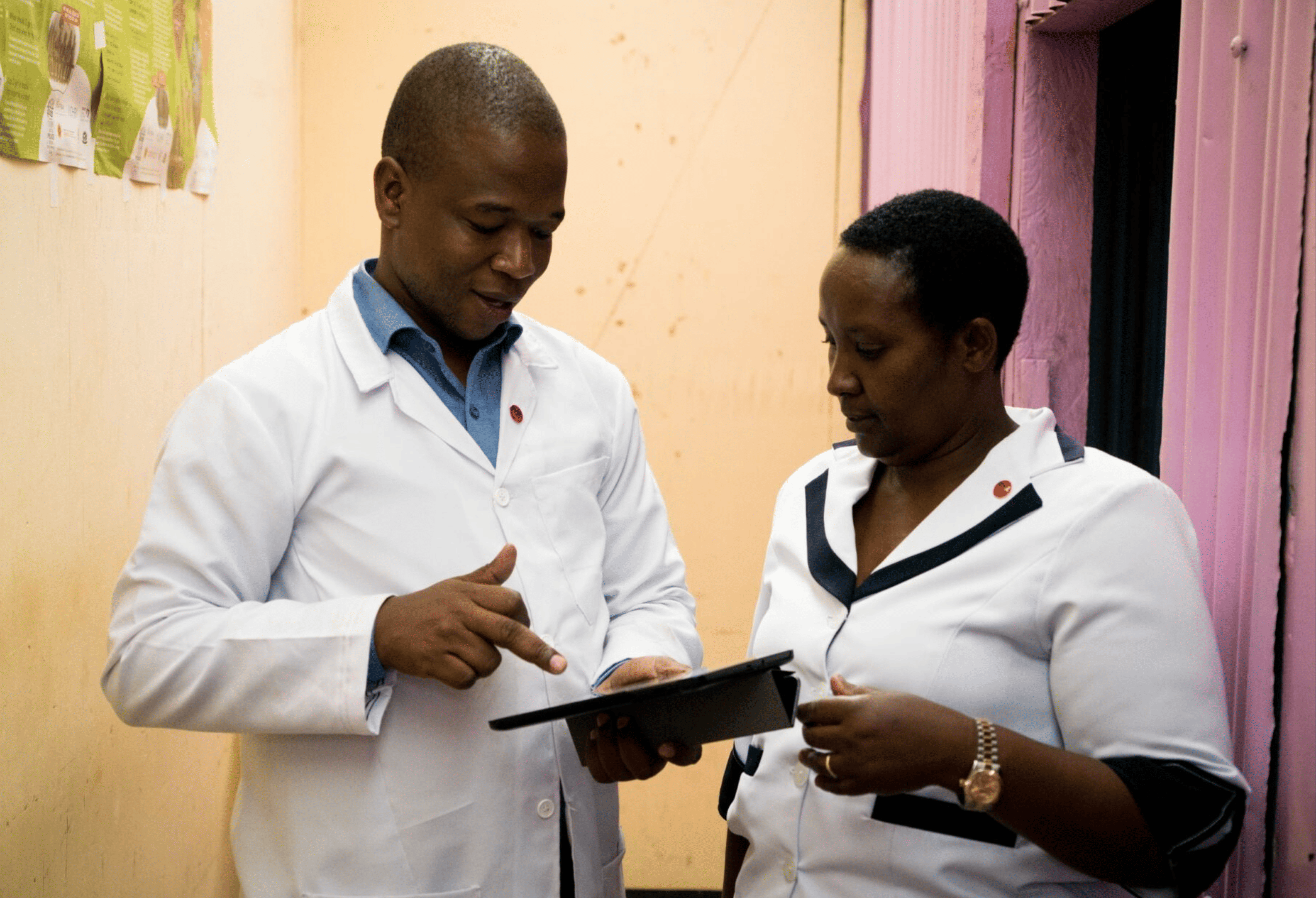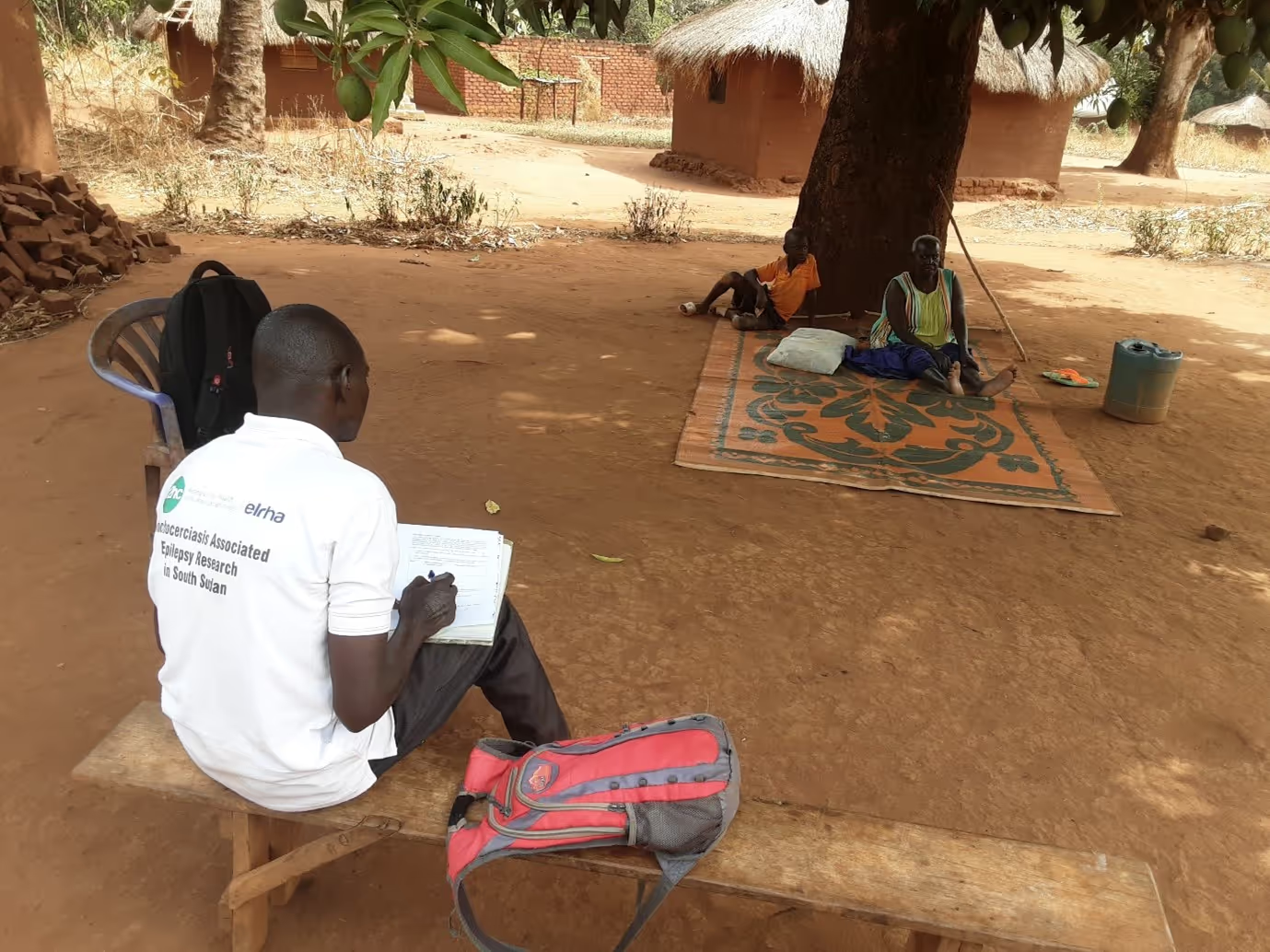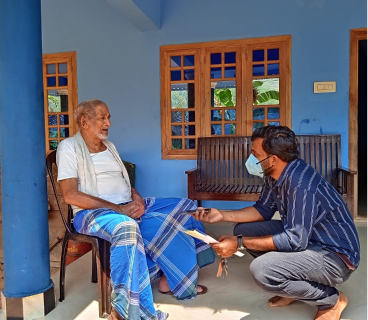Encouraging patients after trauma in humanitarian settings to get moving again

By Bérangère Gohy, Humanity &; Inclusion
It is my first day as a Humanity &; Inclusion physiotherapist in the Médecins Sans Frontières trauma center in Kunduz, Afghanistan in 2011. A cold morning: winter is coming, patients keep arriving. As Ramin, held in his father’s arms, entered the surgical consultation room, I am wondering: What happened to this 10 year old boy? Based on his file, he was operated on in the hospital a few weeks ago, after a gunshot wound to the leg. The wound is now clean and there is no need for further follow-up. Why isn’t he walking then, as he should be by now?
Patients like Ramin are flowing day by day in that hospital, as in many others. Severe injuries like his are common in humanitarian settings, caused not only by violence, but also by falls, road traffic or work accidents. Most of those patients need immediate medical attention, and often require surgery. The lucky ones reach a specialized hospital; but most of them will remain out of reach even for surgical care. When they do get access to a surgeon, the priority is mainly on saving life and limbs; not much attention is paid to ensure they can return to daily life activities afterwards. Physiotherapists are quite a rare species of professional in hospitals in humanitarian settings! And even where they are present, they are often overwhelmed and need to prioritize.
Why wasn’t Ramin walking? Well, most likely, nobody actually told him it was safe for him to move his leg, nor to stand and walk. Probably he was in pain, afraid of getting re-injured, so he stayed in bed.
We started to reflect with my Afghan physiotherapists colleagues. How could we prevent other children - and adults - from having a similar experience to Ramin? How could we improve the recovery of patients after a surgery? And what if a simple test could help to quickly assess the mobility of a patient- while also encouraging the patient to mobilise? This is when the idea of a scale to assess the physical functioning of a patient and estimate their needs took shape: the AIM-T was born (Activity Independence Measure for Trauma)!
The physiotherapy team working in Ramin’s hospital observed that even though the needs of each patient after trauma are different, every individual has to be able to perform some common key movements in his daily life, wherever they live (whether in a rural or urban settings), and whatever they do in their every day lives. With this in mind, the team identified 20 basic movements. These were relevant at that time in that Afghan hospital, and were helpful in the daily practice for this particular team of physiotherapists.
Then, the AIM-T was also used by other teams in other countries. We started to consider: are those 20 movements suitable for all patients, of all ages, in all cultures? And is the AIMT easy and quick enough to be used by overloaded teams? Is the tool giving reliable figures across therapists? Those were the questions we had in mind when starting this research project -first testing the AIM-T validity and reliability in different humanitarian settings (Gaza, Yemen, Iraq, Burundi, Cameroon, Central African Republic and Haiti) before wider use. After several revisions, based on the feedbacks from patients and healthcare professionals, the tool was shortened to 12 items and some of the movements were adapted. For example, “putting on pants” being a part of the initial tool, made some patients uncomfortable and was therefore not often assessed. It was changed to “reaching lower back and grab clothes”, which is considered more appropriate while still evaluating the ability of the patient to use their arms and hands while dressing up. The research project also showed that the revised AIM-T is now suitable across different cultures, quick and reliable.
Having a reliable scale available is one thing, but how to ensure that it will be effectively used by health staff in hospitals? The AIM-T comes in the field with support: drawings of each of the movements are now also used to interact with patients, as well as videos of each movement have been recorded to guide the therapists, a picture saying a thousand words. This tool will hopefully encourage health professionals to mobilise their patients earlier, so that hopefully, children like Ramin will enter the consultation room walking.
You might wonder what happened to Ramin after he left the consultation room? Well, after few physiotherapy sessions, teaching him and his father exercises to be done at home, he left the hospital happily walking.
Stay updated
Sign up for our newsletter to receive regular updates on resources, news, and insights like this. Don’t miss out on important information that can help you stay informed and engaged.
Related articles



Explore Elrha
Learn more about our mission, the organisations we support, and the resources we provide to drive research and innovation in humanitarian response.